Enjoy London on the cheap
Sign up now: Get ST's newsletters delivered to your inbox
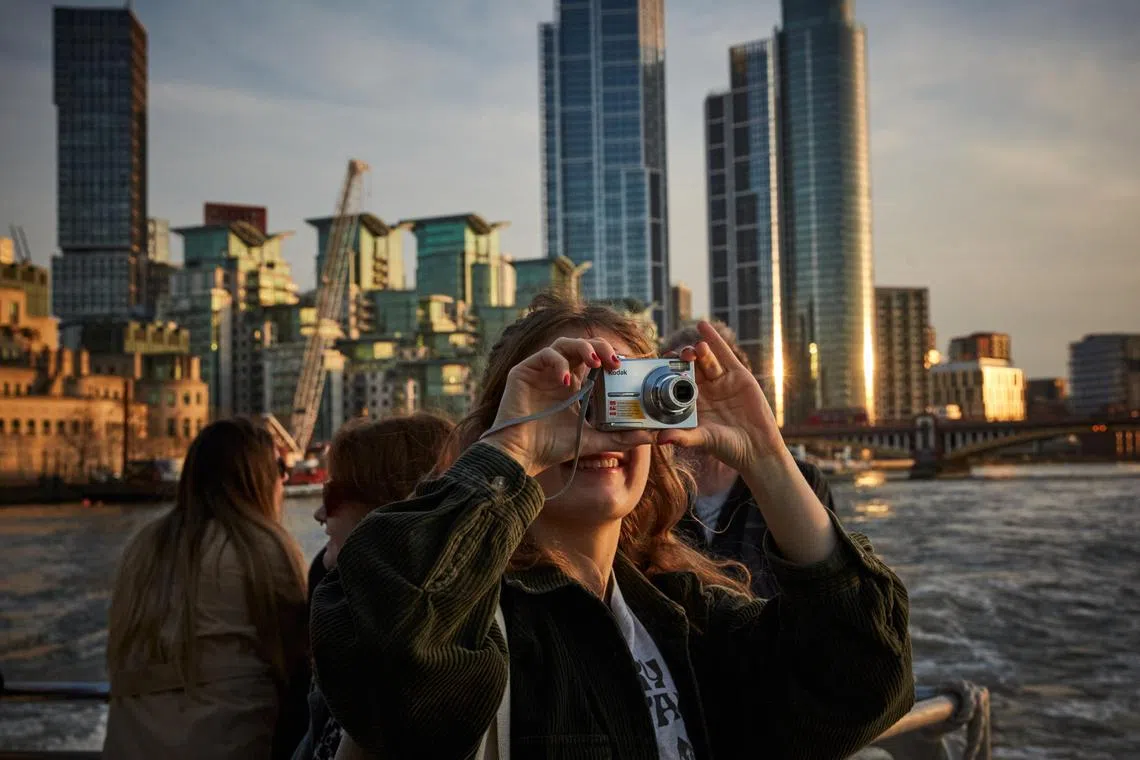
Though London often winds up on lists of the world's most expensive cities, budget travellers will find plenty of free affordable distractions.
PHOTO: ALICE ZOO/NYTIMES
Elaine Glusac
Follow topic:
LONDON – Jet lag can be demanding. Within an hour of arriving in London, my case led me to a £5.50 (S$10) slice of lemon, raspberry and pistachio cake at the cafe in the Victoria and Albert Museum.
The museum itself was free and included the unquantifiable payoff of dining in opulent 1868-vintage rooms with arches, stained glass and William Morris wallpaper.
It fit my bottom line on travel in London: Free museums, priceless surroundings and slightly expensive food that together deliver a net gain.
Though London often winds up on lists of the world’s most expensive cities, travellers will find free attractions and arresting architecture linked by easy-to-navigate public transportation.
Hotel prices often seem high. But unlike rates in the United States, they generally include taxes and extras like breakfast. And tipping is not standard, so you can save 15 to 20 per cent on each meal.
There are many worthy ways to splurge in London, including visiting landmarks such as the Tower of London (£35), Westminster Abbey (£30) and St Paul’s Cathedral (£26).
I took a wide-angle approach over a recent four-day, budget-stretching trip, staying in three neighbourhoods – one central and two more outlying – to assess what is gained and lost by chasing bargains. A combination of free art, attractions and £4 lunches, with some minor splurges on entertainment, kept my expenses to about US$200 (S$260) a day.
Secrets and salt beef
To reach the V&A from the airport, I took the Heathrow Express train to Paddington Station (£25) in 15 minutes, which saved me more than half an hour on the Tube underground train (£5.60).
The airport is distant, but most bus and subway rides within central London cost less than £3 and are capped at £8.90 a day when you use the same credit card or electronic payment method each time.
In addition to cake, jet lag led me to a Secret London Tour from Fun London Tours (£18). I hoped the 90-minute walk would keep me moving despite exhaustion.
In Trafalgar Square, I met Mr Joe Brown, a former London cabby who guided our group of 15 to “secrets” that were hidden in plain sight. They included a Trafalgar Square police station disguised as a light fixture; Goodwin’s Court, a Covent Garden alley lined with 17th-century buildings; and the last street lamp lit by sewer gas located, ironically, near the high-end Savoy hotel.

A room at the Buxton hotel in the Brick Lane area of East London.
PHOTO: ALICE ZOO/NYTIMES
My cheaper lodging choice in the Brick Lane area of East London took about 30 minutes to reach by the Tube. With 15 cosy rooms above a small, stylish restaurant, the Buxton’s thoughtfully designed quarters included espresso machines and books on the city from the nearby Libreria Bookshop. Though the room (£150) was a reach for my budget, it included a generous breakfast.
The location anchored me in lively Brick Lane, where markets and restaurants run by Bangladeshi entrepreneurs meet street art, vintage clothing shops and bakeries selling beigels (also known as bagels) with salt beef (about £8).
Art with backstories
Sherlock Holmes, Scrooge, Shakespeare. London is synonymous with incredible characters. But have you heard the one about Canaletto?
A Venetian, Giovanni Antonio Canal, known as Canaletto, was a favourite of 18th-century British travellers to Venice, where he sold detailed, souvenir-size paintings. When an Austrian war stifled travel in 1740, he followed his fans to London, only to find forgers making a fortune impersonating him.
In 1749, he painted London: The Old Horse Guards From St James’s Park, a broad canvas of blushing clouds above a cityscape now hanging in the Tate Britain (free). “Canaletto painted this large canvas to prove he was not an impostor,” said Mr Malcolm Morris, a gallery docent.
The gallery also displays artworks made in the country or by artists including John Singer Sargent and J.M.W. Turner over the last 500 years.
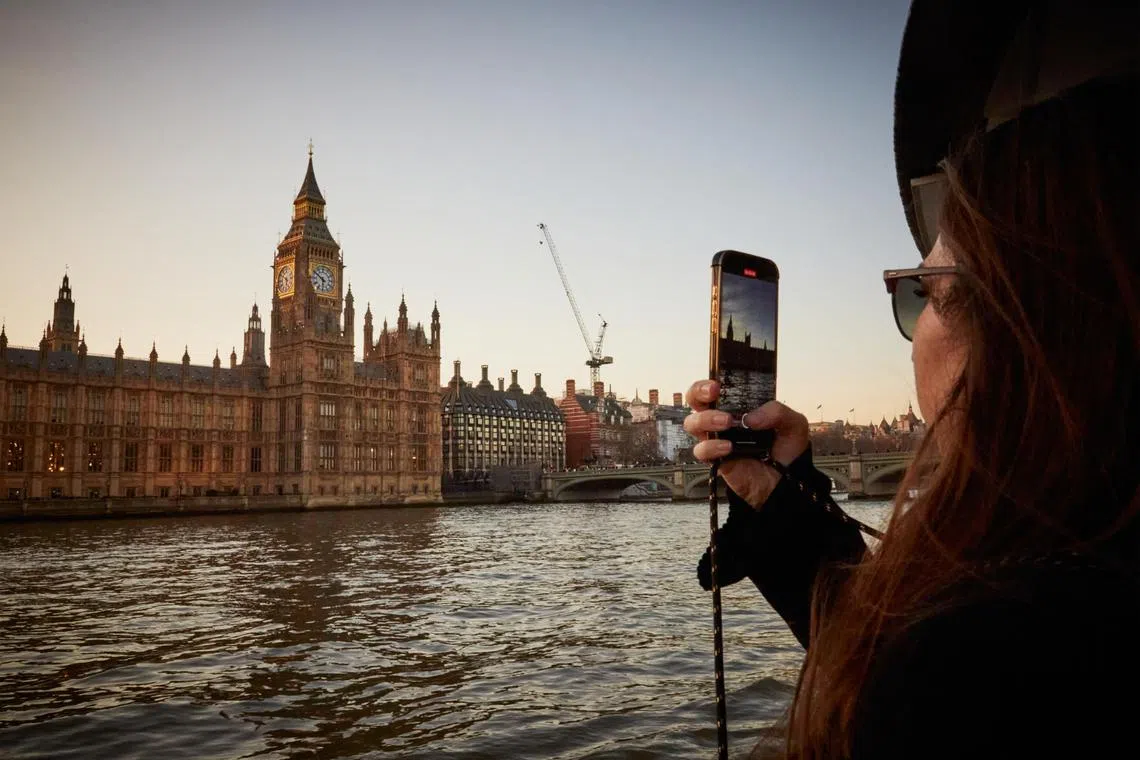
A traveller records a video of the Palace of Westminster while riding an Uber Boat in London.
PHOTO: ALICE ZOO/NYTIMES
From the Tate Britain, I headed to the riverbank and caught an Uber Boat by Thames Clippers (£9) for the six-stop ride past the Palace of Westminster and Big Ben to the south shore Southwark area bound for the bustling Borough Market.
Dating to 1756, the indoor-outdoor complex hosts produce stands, cheese shops and wine stores among a world of prepared-food vendors. Crowds shuffled through the market scarfing down oysters, paella, shawarma and cannoli while vendors hawked samples of wild mushroom risotto and triple-cooked chips.
I settled on a pork, Parmesan and fennel slaw ciabatta sandwich from the Black Pig (£12) that was big enough for two.
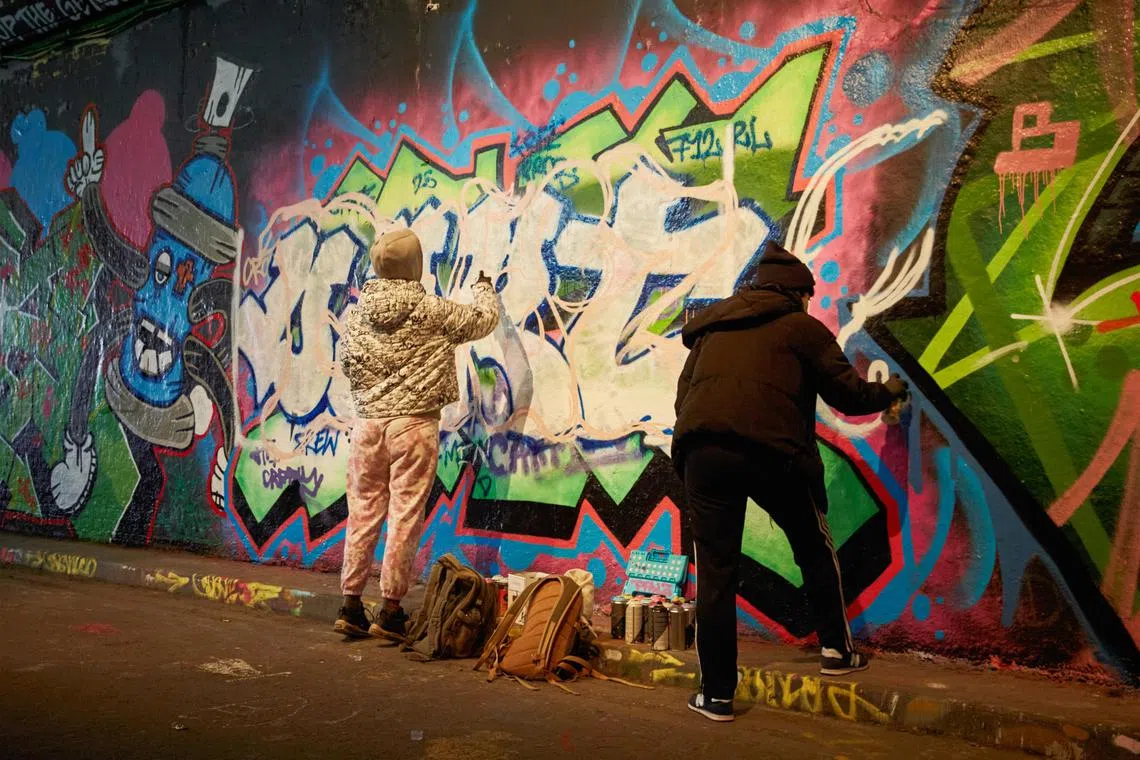
Artists work in the subterranean Leake Street Arches, a colourful, constantly changing gallery of street art in the South Bank area of London.
PHOTO: ALICE ZOO/NYTIMES
I walked it off along the untouristed streets of neighbouring South Bank to reach Waterloo Station and its subterranean Leake Street Arches.
Street artist Banksy began painting in the abandoned, nearly 300m-long Leake Street tunnel in 2008. Today, it is a constantly changing gallery of spray-painted works (free).
The price-location trade-off
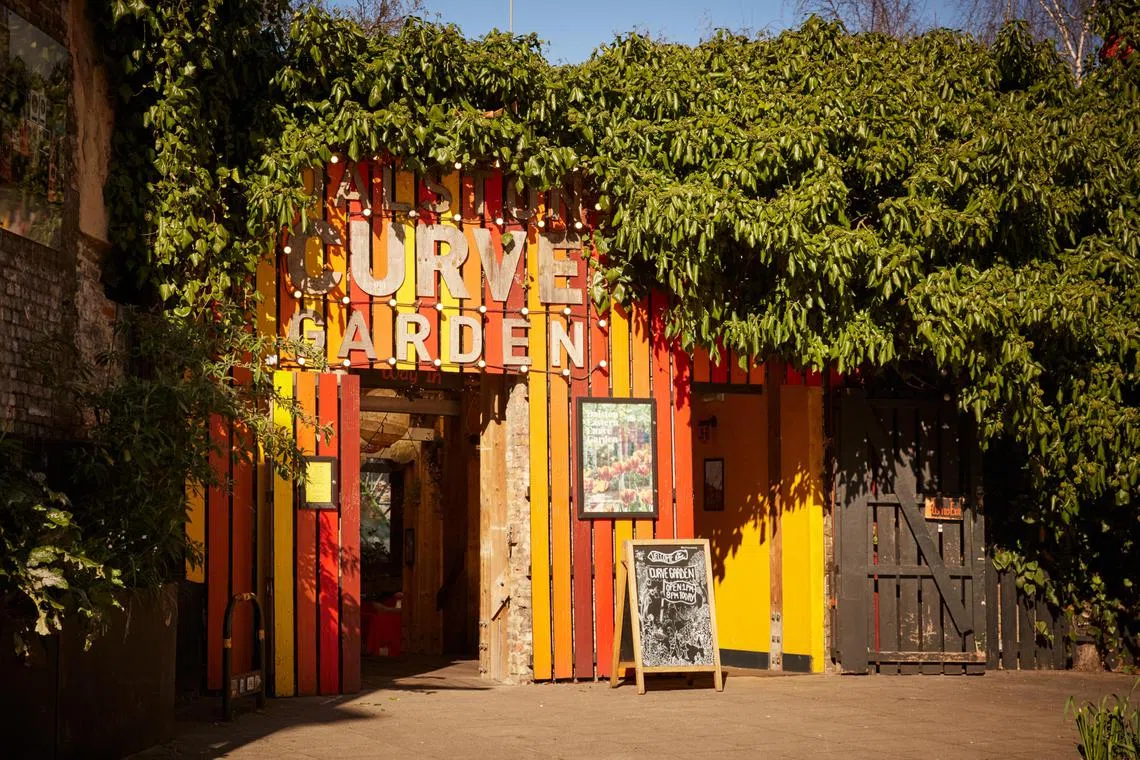
The Dalston Eastern Curve Garden, with an outdoor cafe and park, is situated on a former railway line.
PHOTO: ALICE ZOO/NYTIMES
On day two, I moved to another East London neighbourhood, Dalston, for a residential stay and the chance to explore the area’s offbeat attractions, including the Dalston Eastern Curve Garden, a former railway line turned into an outdoor cafe and park (free), and the Dusty Knuckle, a bakery that supports at-risk youth with job training in baking crusty sourdough (£5) and shattering croissants (£3).
The loft-style Luxury Inn, home to four rooms (from £110, including breakfast) in a former industrial building, also exerted considerable sway. My airy room offered shared access to a sky-lit living room and well-stocked kitchen.
Escaping London’s teeming tourist districts was its own attraction, but returning to Soho, a buzzy nightlife quarter near the West End theatre, took 40 minutes on a double-decker bus during rush hour.
I made it in time for a pre-theatre meal at the 30-seat Bao Soho, which caters to diners at the bar with a “Long Day Menu” of five small Taiwanese courses, including savoury peanut milk, fried chicken and guinea fowl rice (£20).
I then walked to the former Playhouse Theatre renamed the Kit Kat Club in honour of its resident show, Cabaret, where I had booked a relatively cheap seat in the second to last row (£50). The performance was electric, even viewed from two storeys up.
Cabstand and crypt dining
On my last day, I moved to the more central Bloomsbury area and the no-frills Judd Hotel, with a crescent-shaped Georgian exterior. My tidy single accommodated little more than a narrow bed and desk, but I was paying for location (£154, including breakfast).
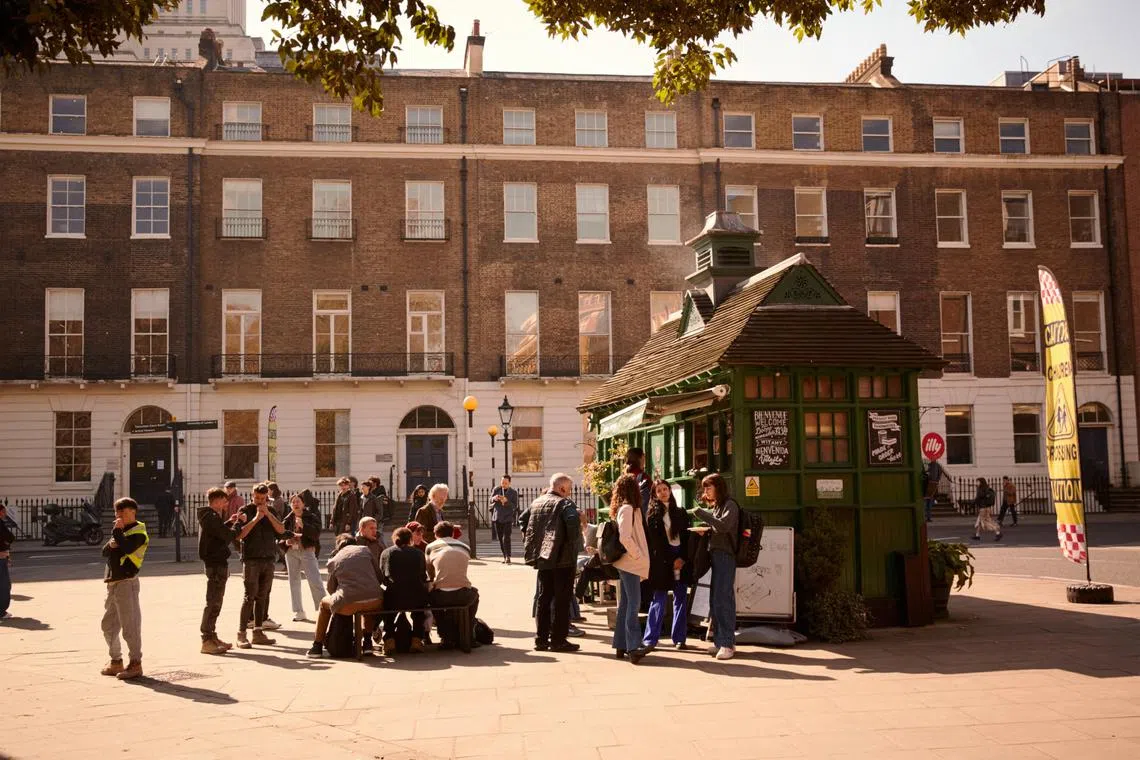
Patrons outside Cabmen’s Shelter in London. Only taxi drivers are welcomed inside the cafe on Russell Square. Other patrons use the takeaway window.
PHOTO: ALICE ZOO/NYTIMES
I found a more distinctive breakfast option nearby in Russell Square, home to Cabmen’s Shelter, one of 13 remaining green cottages conceived in 1875 as roadside rest stops for carriage drivers. Today, only taxi drivers are welcomed inside for meals while a public window sells basic bargain fare (£5 for eggs with sausage and bacon) for takeaway to a park bench.
Around the corner, the 10am opening-hour line for the British Museum (free) was snaking down the block. The vast collections of antiquities are overwhelming. My stimulation limit was two hours, enough time to explore Rooms 4 (Egyptian sculpture) and 41 (the remains of the Anglo-Saxon burial ship Sutton Hoo, which was the subject of the 2021 film, The Dig).
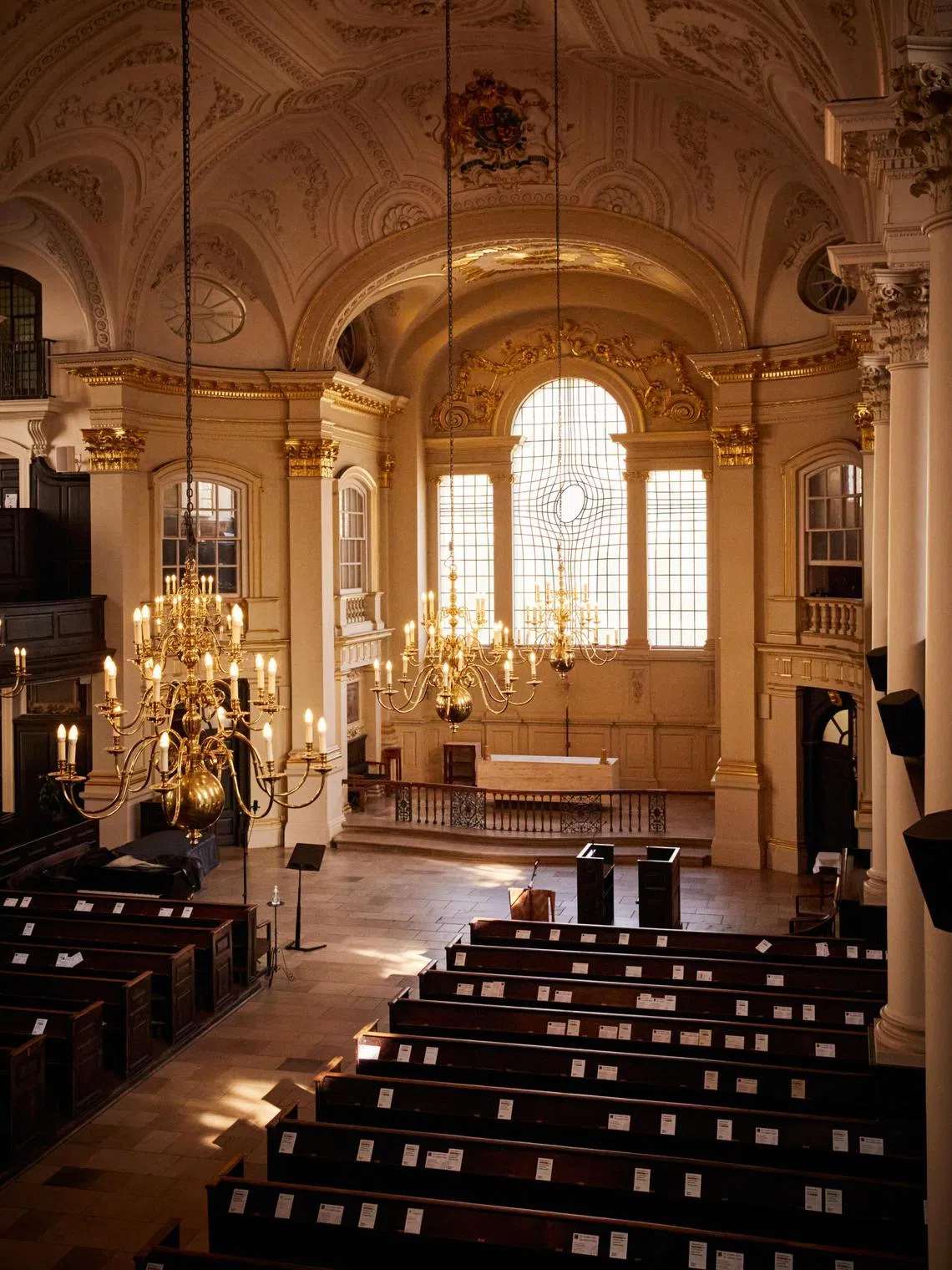
Inside St Martin-in-the-Fields, a centuries-old Anglican church in Trafalgar Square that is renowned for its music programming.
PHOTO: ALICE ZOO/NYTIMES
By noon, I was back in Trafalgar Square at St Martin-in-the-Fields, an Anglican church with 13th-century roots – the current building dates to 1726 – which is renowned for its music programming, including bargain Friday afternoon concerts (£10).
From a wooden pew, I caught classical Indian vocalist Sach Dhanjal accompanied by a moody harmonium and a hand drum.
Before the 1pm show, I visited the church’s Cafe in the Crypt, serving bargain food in the brick-vaulted basement. Healthy servings of two delicious salads for £4 – quinoa and beets, and pearled couscous with chicken – was the food bargain of the trip.
That evening, I aimed for a London double feature – a pub and a show – by visiting a pub theatre. Normally above a bar, pub theatres showcase local comedians, theatre companies and emerging artists in small venues.
I arrived in the Earl’s Court neighbourhood to find the pub downstairs from the Finborough Theatre disappointingly closed for renovation. But the show, a riveting revival of the 1933 screenplay The Silver Cord (£35), more than compensated.
“It’s like being inside the telly,” said my seatmate on one of 10 cushioned benches arrayed around the set representing a New England living room.
Afterwards, the Tube whisked me back to busy Chinatown for a messy late-night crepe from Chinese Tapas House (£5) and the always-free theatre of London street life. NYTIMES

